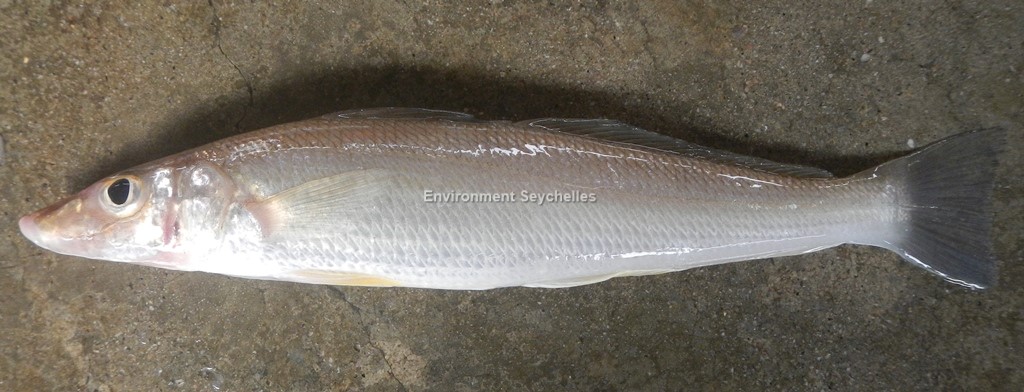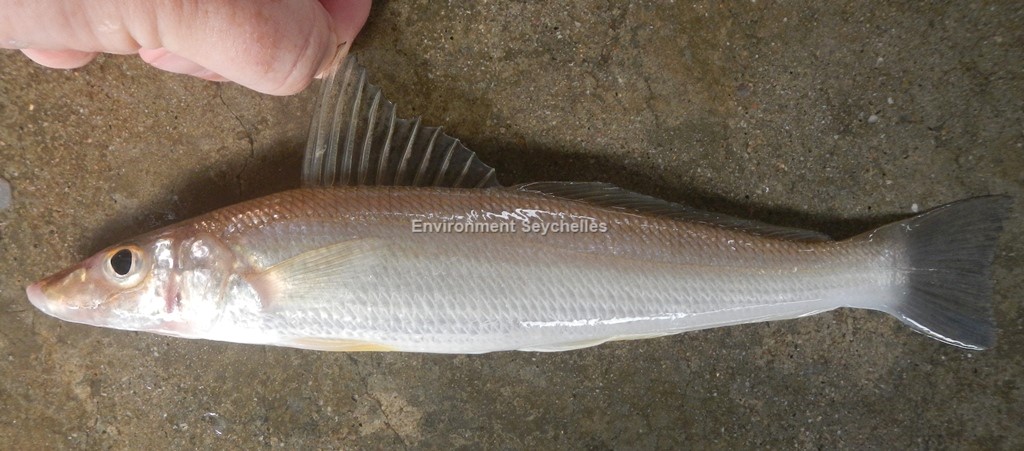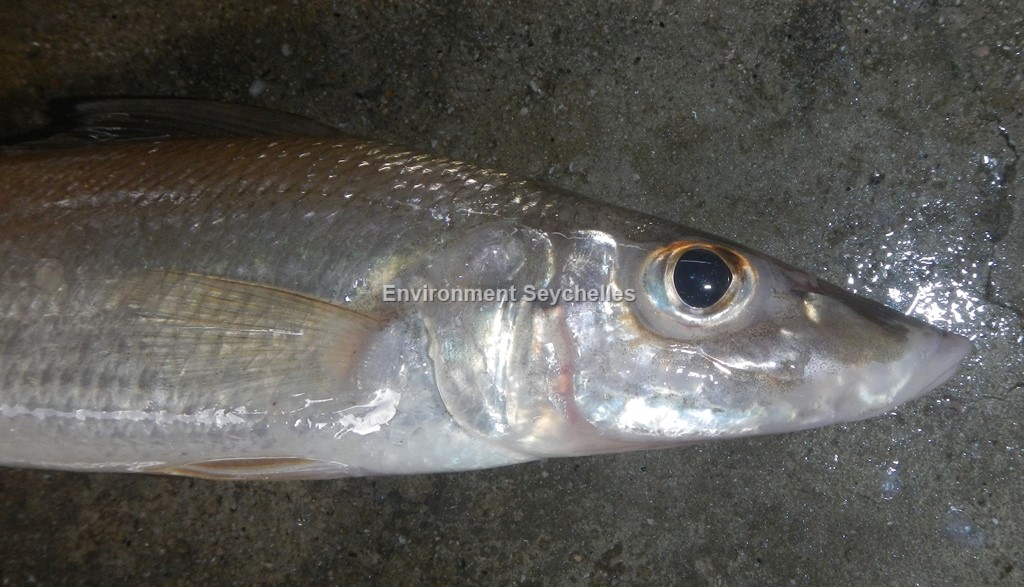Description:
Dorsal spines: 11 - 13; Dorsal rays: 20-23; Anal spines: 2; Anal rays: 18-23.
Body elongate. Snout pointed. Mouth small and terminal. Villiform teeth in jaws. Scales on cheek.
A small, sharp spine on opercle. First dorsal fin higher than second. Low Lateral line with 5 to 6 scale rows above it.
Colour. Silvery yellow-brown to light silvery pink dorsally shading to whitish or silvery on lower flanks and ventrally. A midlateral, silvery, longitudinal band normally present. Both dorsal fins and caudal fin dusky, other fins hyaline. Anal fin frequently with a whitish margin
Size:
Maturity: Lm 22.5 TL. Max Length: 31cm TL. Commonly to 20cm TL.
Habitat and Ecology:
Inhabits shallow sandy bottoms of shores and bays, also estuaries (depth 0-60m, usually 0-2m). Form schools. Adults bury themselves in the sand when disturbed. Feeds primarily on small invertebrates. Oviparous. Larvae and juveniles are pelagic feeding on plankton.
Fishery Status:
This species is not protected or subject to fishery regulations. It is caught in net fisheries of shallow water and by handline. It is a relatively uncommon component of the catch.
Notes:
References:
Fischer, W. & G. Bianchi (eds), (1984). FAO species identification sheets for fishery purposes. Western Indian Ocean; (Fishing Area 51). Prepared and printed with the support of the Danish International Development Agency (DANIDA). Rome, Food and Agricultural Organization of the United Nations, vols 1-6.
Froese, R. & D. Pauly. Eds. 2019. FishBase. https://www.fishbase.se/summary/4544 (19/08/19).
Smith-Vaniz, W.F. & Sparks, J.S. 2016. Sillago sihama (errata version published in 2017). The IUCN Red List 2016: e.T203423A115349449. http://dx.doi.org/10.2305/IUCN.UK.2016-3.RLTS.T203423A2765049.en. (19/08/19).
Citation:




Looking forward to reading more. Great blog.Much thanks again. Really Cool.
I appreciate you sharing this blog article. Much obliged.
I cannot thank you enough for the blog. Keep writing.
Very neat article.Thanks Again. Really Cool.
wow, awesome post.Really looking forward to read more. Want more.
wow, awesome post. Cool.
Thank you for your blog.Much thanks again. Really Great.
Major thanks for the post.Really looking forward to read more. Will read on…
I really like and appreciate your blog.Really thank you! Want more.
I cannot thank you enough for the blog.Really looking forward to read more. Will read on…
This is one awesome blog post.Really looking forward to read more. Great.
Muchos Gracias for your blog post.Really looking forward to read more. Keep writing.
Thank you for your article.Really looking forward to read more. Cool.
Thank you ever so for you blog post.Really looking forward to read more. Will read on…
Major thankies for the blog article.Really looking forward to read more.
I think this is a real great article.Much thanks again.
A round of applause for your post. Fantastic.
Really enjoyed this blog post.Really thank you!
Say, you got a nice blog post.Really looking forward to read more. Great.
Thanks-a-mundo for the post.Really looking forward to read more.
Appreciate you sharing, great article post.Really looking forward to read more. Really Great.
Im obliged for the blog.Thanks Again. Want more.
This is one awesome blog post.Much thanks again. Awesome.
I really enjoy the blog. Really Cool.
Thanks for the blog post.Much thanks again. Fantastic.
Thanks for sharing, this is a fantastic article post. Great.
I am so grateful for your blog post.Thanks Again. Great.